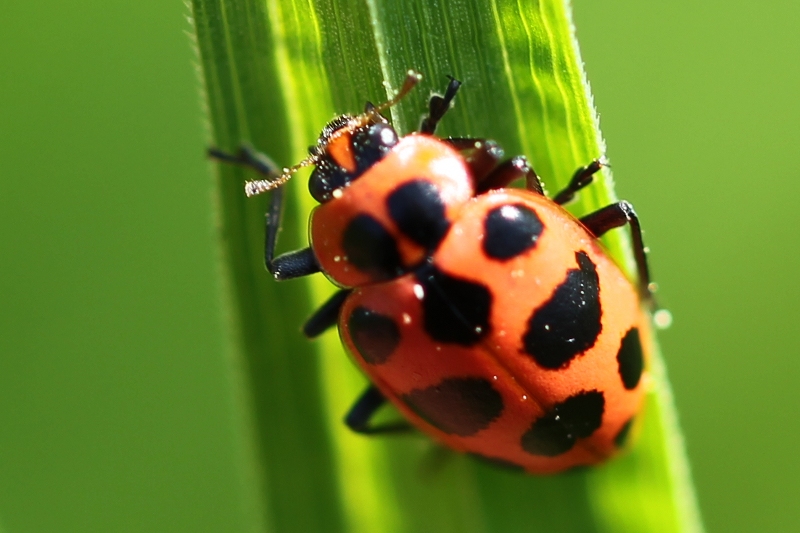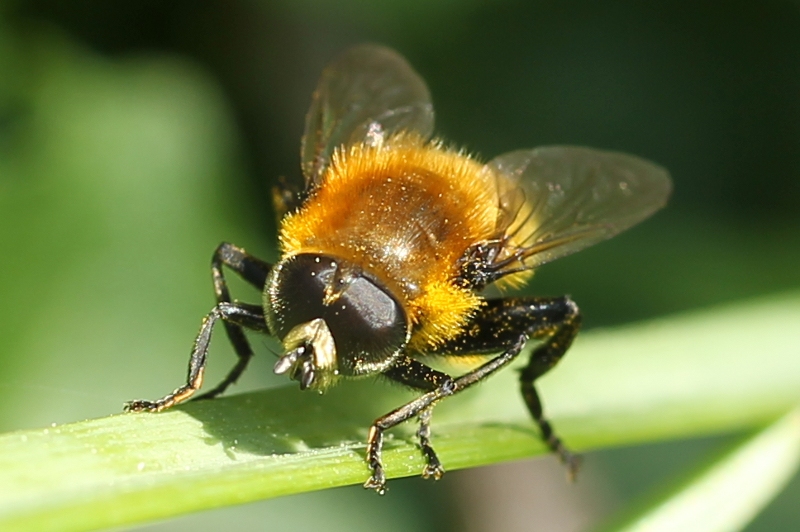I found two eastern tiger swallowtail butterflies (Papilio glaucus) on a mulch bed at the Arboretum last week. They appeared to be basking in the sun. At times, both would shiver their wings. I assumed one of these butterflies was a male and the other female but, judging from the lack of blue chevrons on their hindwings, they both appear to be male.

Hoverflies are some of our more conspicuous insects. Brightly colored, they land on leaves and make no attempt to hide themselves, probably relying on their mimicry of bees or wasps to stay safe. I saw two types of hoverflies. The first, with a very skinny abdomen, was this Toxomerus geminatus.

The second, with a thicker abdomen and larger black stripes, is tougher to identify to species and was narrowed down on BugGuide to one of the genuses Syrphus or Parasyrphus or Epistrophe.

This tiny red braconid wasp was identified to the genus Aleiodes. According to BugGuide, these mummy-wasps attack and kill many kinds of leaf-feeding caterpillars, mummifying them for their larvae to eat. Unlike some of its brasher relatives, this one edged away from me as I approached and then flew away.

I found a male eastern forktail damselfly (Ischnura verticalis) with some unusual coloration. The last few segments of its abdomen were pinkish-purple rather than bright blue. Apparently this is because it is “young or cold.”

I saw two types of lady beetles, both red with black spots. The multicolored Asian lady beetle (Harmonia axyridis) is native to Asia but commonly found here in the U.S. Unlike many accidental introductions, this one was purposefully released to help control pests such as aphids.

The spotted lady beetle (Coleomegilla maculata) has more of a traditional beetle shape, less rounded in the abdomen. It is one of our native species.

One of my more interesting finds was this narcissus bulb fly (Merodon equestris). These flies, like the hoverflies above, also mimic bees. Native to Europe, they were accidentally imported. They are pests of bulbs such as daffodils and snowdrops.

Thanks to Kelsey J.R.P. Byers, v belov, Ken Wolgemuth, Bob Carlson, Joseph Fortier, John and Jane Balaban, and Martin Hauser for their identification help on BugGuide.




















